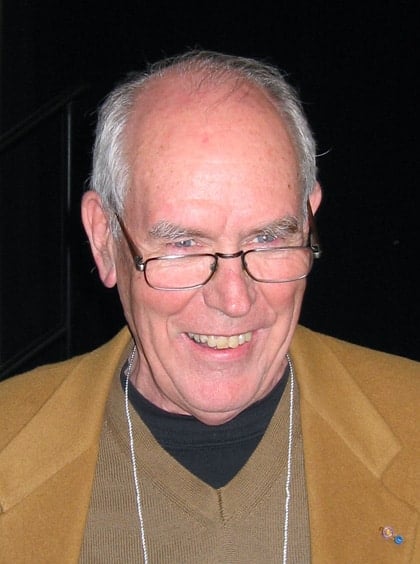Key Points and Facts about Sketchpad Computer:
- Ivan Sutherland’s Ph.D. thesis in 1963 resulted in the creation of Sketchpad, a pioneering computer application. Sketchpad was a pioneer in the field of human-computer interaction (HCI).
- Sketchpad is regarded as the forerunner of today’s computer-aided design (CAD) software. It is also recognized as an important step forward in the development of computer graphics, as it was one of the first of its kind.
- Sketchpad ran on the Lincoln TX-2 computer, an innovative machine designed in 1956. It had a large amount of memory for its time: a vacuum-tube-driven core of 64K words, a faster, transistor-driven core of 4K words, a paper-tape reader, and could also use magnetic tape as auxiliary storage.
- The Sketchpad used drawing as a novel communication medium for a computer. The system contains input, output, and computation programs that enable it to interpret information drawn directly on a computer display. It was a general-purpose system and has been used to draw electrical, mechanical, scientific, mathematical, and animated drawings.
What Is Sketchpad Computer Program: Explained
The Sketchpad Computer application, created as part of Ivan Sutherland’s Ph.D. thesis, pioneered human-computer interface (HCI) and is thus considered the forerunner of current computer-aided design (CAD) software. It’s been dubbed a “breakthrough” in computer graphics. For example, the graphical user interface (GUI) was derived from GUI. This software was used by Ivan Sutherland for both technical and creative elements of computer graphics, emphasizing the importance of human-computer interaction. Sketchpad, for example, was used to develop cutting-edge object-oriented programming and the graphical user interface (GUI).
The Lincoln TX-2 (1958) computer at MIT, which had 64k of 36-bit words, was used to run Sketchpad. With the freshly designed light pen, the user scribbled on the screen. The coordinates of that spot for the display system were stored in 20 bits of the 36 bits available for each display spot in the display file, while the remaining 16 bits were used to hold the address of the n-component element responsible for adding that place to the display.
Quick Facts
- Creator (person)
- Ivan Sutherland
- Release Date
- 02/01/1963
- Operating System
- Graphical user interface
- Developed By (company)
- Lincoln TX-2
It is regarded as the parent of contemporary computer-aided design (CAD) tools as well as an important achievement in the development of computer graphics in general, having pioneered human-computer interface (HCI)
How to Use Sketchpad?
The user can easily draw directly on the computer monitor by using the light pen. The light pen was specifically designed for this purpose and it is used to move sections of the artwork around on the screen as well as to point to them to modify them. The adjustments to be made are controlled by a set of pushbuttons. The software is so easy to use and an almost negligible amount of tutorials are needed to grasp the easy concept of Sketchpad!
With Sketchpad, straight-line segments, and circular arcs are just the two examples of information that may be drawn. Tutorials are there to assist you at any place you are stuck at. Any collection of line segments, circle arcs, and previously specified symbols can be used to create arbitrary symbols. A user is free to create and use as many symbols as he wants. Any modification in a symbol’s definition is immediately visible everywhere that symbol occurs.
With a “light pen,” a Sketchpad user draws directly on a computer monitor. The light pen is used to move sections of the artwork around on the screen as well as to point to them to modify them. The adjustments to be made are controlled by a set of pushbuttons, such as “erase,” “move,” and so on. Sketchpad is also capable of repositioning elements of the drawing to accommodate changing circumstances.
Functions
Sketchpad is capable of moving sections of the drawing around to satisfy new requirements imposed by the user. The light pen and push buttons are used by the user to identify circumstances. To make two lines parallel, for example, he uses the light pen to point to the lines and then hits a button. The criteria themselves are drawn on the artwork and may be erased or altered using light pen language. A composite condition can be described as any combination of conditions applied in a single step.
Sketchpad preserves information on the topology of a sketch. It maintains detailed information about a drawing’s structure when the user performs a single movement. When one vertex of a polygon is moved, both sides of the polygon are adjusted as well. When the user moves a symbol, the lines that are attached to it move with it to keep it attached. The topological relationships of the drawing are automatically indicated while the user doodles. Because it can collect topological information from a human being in a visual language that is fully natural to the human, Sketchpad may be used as an input program for computer programs that require topological data, such as circuit simulators.

Sketchpad Release History
Sutherland was prompted by his ideas by the Memex from Vannevar Bush’s “As We May Think.” During the 1960s, the Augmentation Research Center (ARC) at the Stanford Research Institute (SRI) motivated Douglas Engelbart to create and implement the oN-Line System.
In 1963, most computers only executed batch jobs, which were supplied by experienced programmers or engineering students on punched cards or magnetic tape reels. To make the TX-2 work in interactive mode with a huge CRT screen, a significant amount of effort was necessary. It had to be reconverted to batch mode when Sutherland had finished with it.
The image featured at the top of this post is ©Scanned by Kerry Rodden from original photograph by Ivan Sutherland, CC BY-SA 3.0, via Wikimedia Commons.

